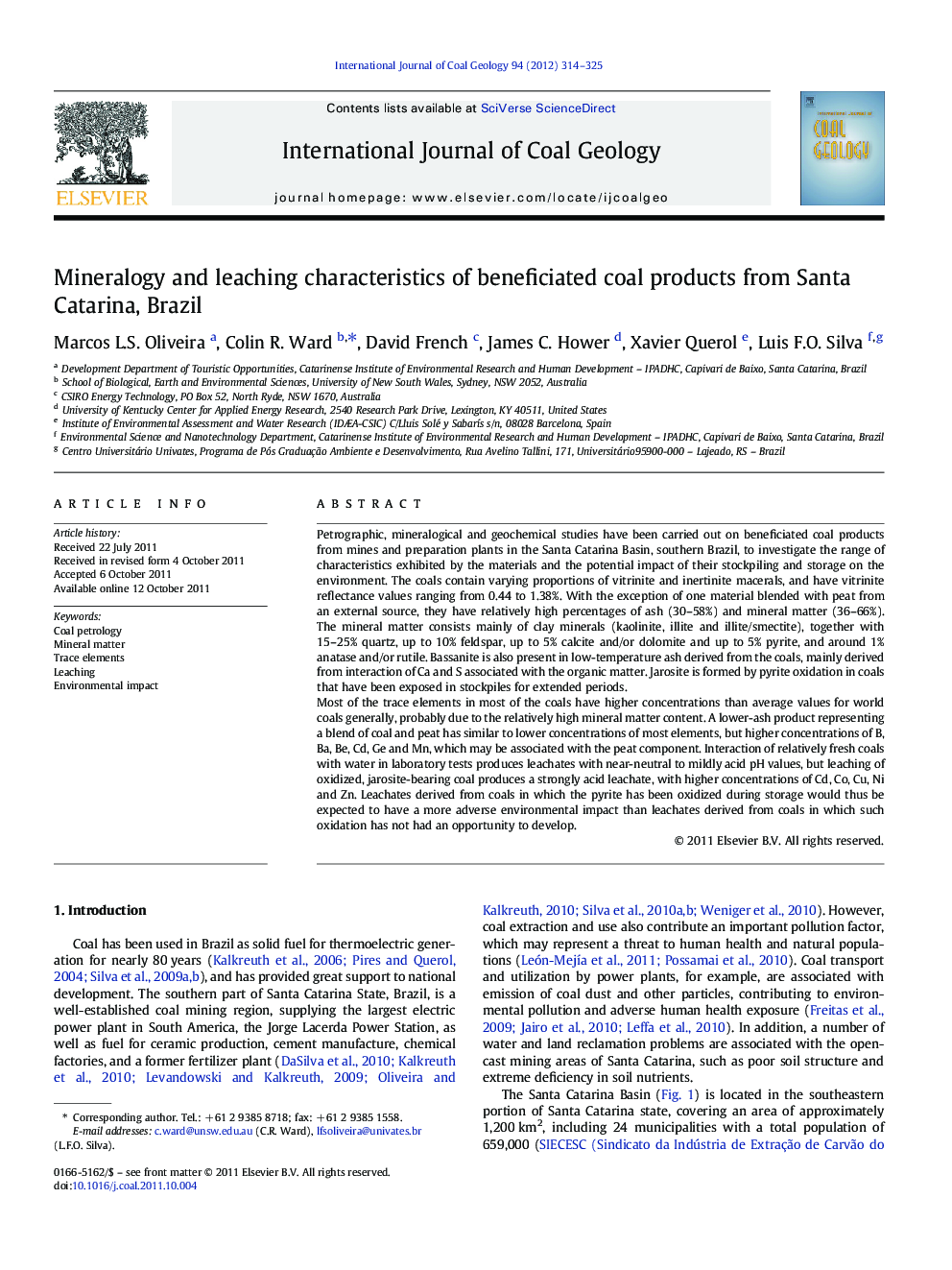| Article ID | Journal | Published Year | Pages | File Type |
|---|---|---|---|---|
| 1753665 | International Journal of Coal Geology | 2012 | 12 Pages |
Petrographic, mineralogical and geochemical studies have been carried out on beneficiated coal products from mines and preparation plants in the Santa Catarina Basin, southern Brazil, to investigate the range of characteristics exhibited by the materials and the potential impact of their stockpiling and storage on the environment. The coals contain varying proportions of vitrinite and inertinite macerals, and have vitrinite reflectance values ranging from 0.44 to 1.38%. With the exception of one material blended with peat from an external source, they have relatively high percentages of ash (30–58%) and mineral matter (36–66%). The mineral matter consists mainly of clay minerals (kaolinite, illite and illite/smectite), together with 15–25% quartz, up to 10% feldspar, up to 5% calcite and/or dolomite and up to 5% pyrite, and around 1% anatase and/or rutile. Bassanite is also present in low-temperature ash derived from the coals, mainly derived from interaction of Ca and S associated with the organic matter. Jarosite is formed by pyrite oxidation in coals that have been exposed in stockpiles for extended periods.Most of the trace elements in most of the coals have higher concentrations than average values for world coals generally, probably due to the relatively high mineral matter content. A lower-ash product representing a blend of coal and peat has similar to lower concentrations of most elements, but higher concentrations of B, Ba, Be, Cd, Ge and Mn, which may be associated with the peat component. Interaction of relatively fresh coals with water in laboratory tests produces leachates with near-neutral to mildly acid pH values, but leaching of oxidized, jarosite-bearing coal produces a strongly acid leachate, with higher concentrations of Cd, Co, Cu, Ni and Zn. Leachates derived from coals in which the pyrite has been oxidized during storage would thus be expected to have a more adverse environmental impact than leachates derived from coals in which such oxidation has not had an opportunity to develop.
►Santa Catarina coals contain a mineral assemblage of illite, I/S, kaolinite, quartz, pyrite and calcite. ►Pyrite in long-exposed coals has been oxidized to jarosite, which produces acid leachates in water. ►Leaching of jarosite-bearing coals produces high concentrations of several trace elements. ►Fresh coals produce more neutral leachates in water, with lower element concentrations.
